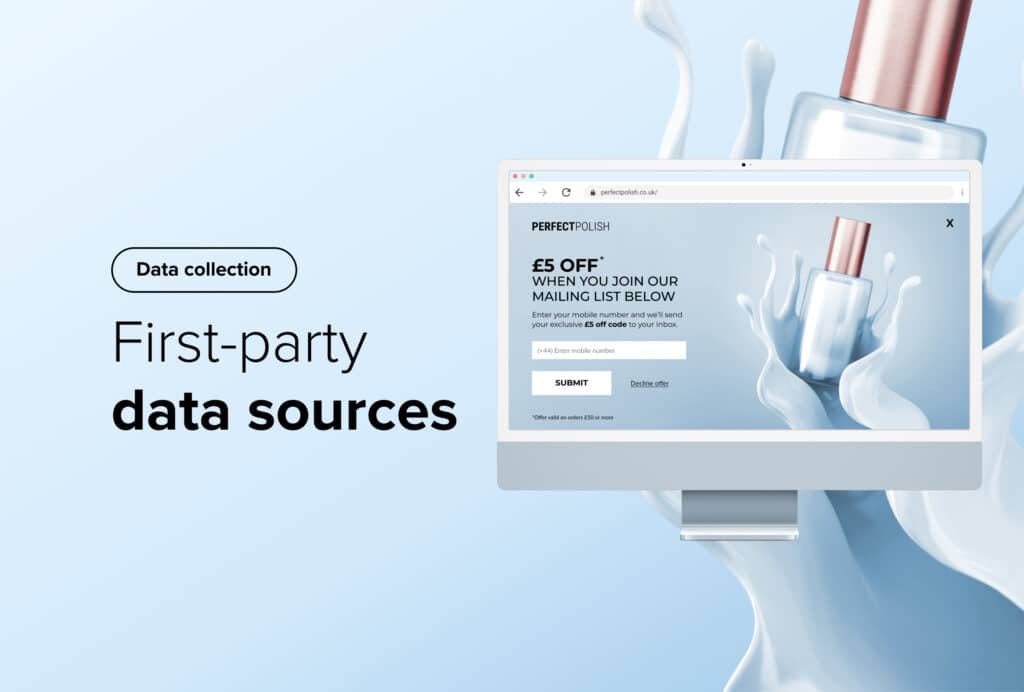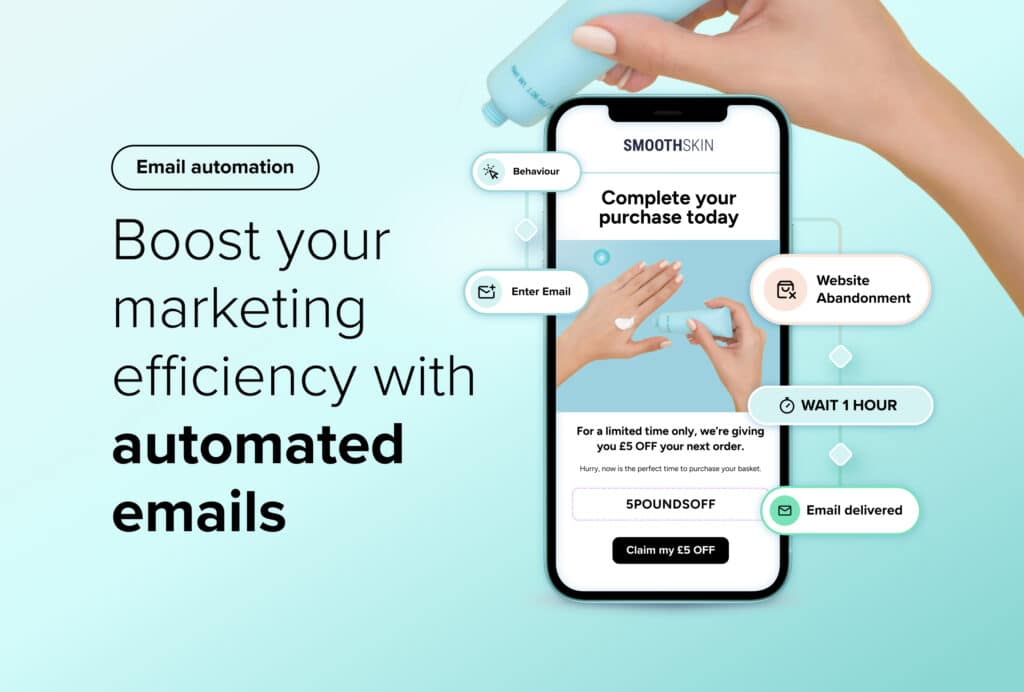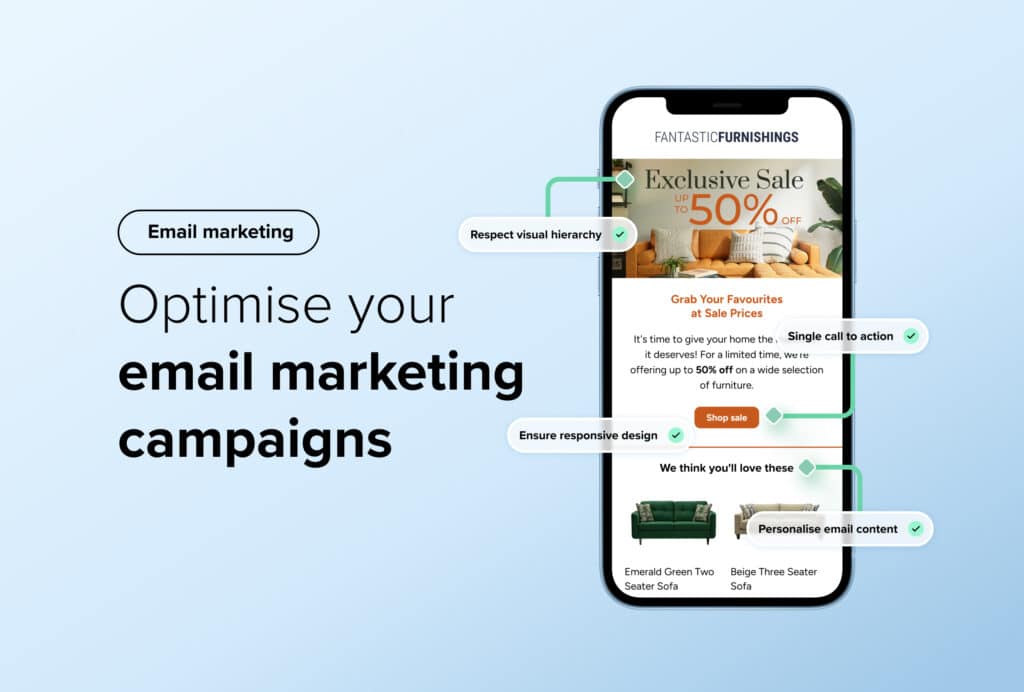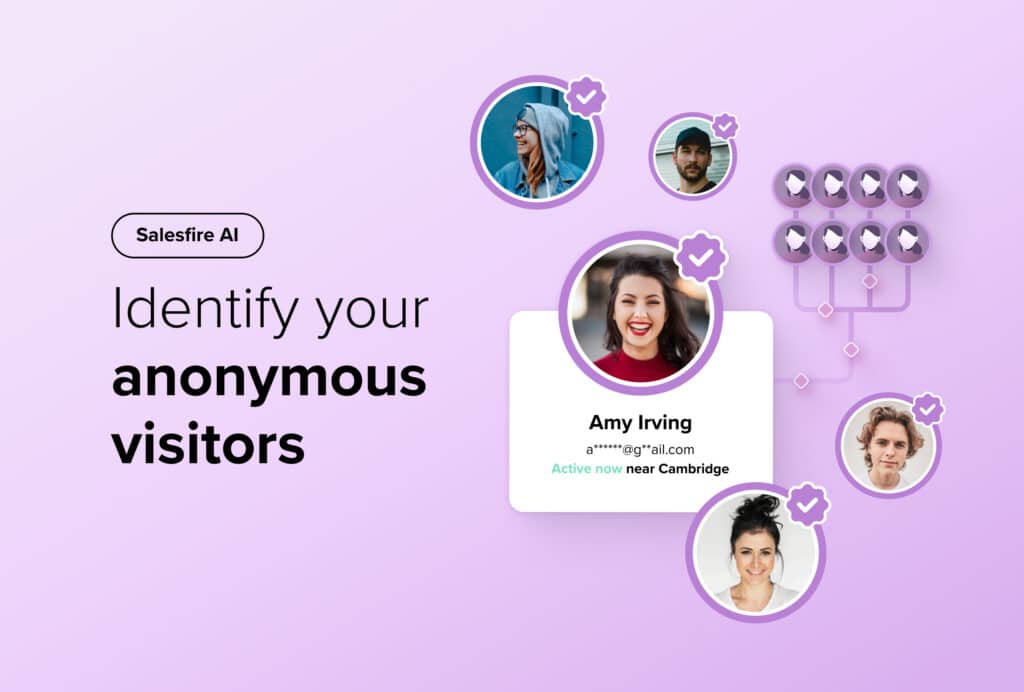6 Ways to Collect First-Party Data: Sources, Examples and Collection Methods
By Sophie Walker • Last updated: Tuesday Mar 4th, 2025

To create successful marketing campaigns, it’s first essential to consider how you collect first-party data.
Whilst you may currently rely on third-party data to collect this information and retarget lost customers, increased focus on data privacy measures places a renewed importance on first-party data in the eCommerce industry.
Taking a proactive approach toward collecting this data not only allows retailers to enhance their customer insights but also to create personalised experiences that encourage purchases.
In this article, we’ll delve into examples of how to get first-party data and how you can use these strategies to achieve your business goals.

The importance of first-party data sources
Google may have backtracked on its plan to remove third-party cookies, but it will still implement additional privacy measures that users can apply across their web browsing, allowing individuals to decide whether to turn cookies on or off.1
Despite the survival of third-party cookies, retailers need to acknowledge that the browser’s sudden U-turn signals the need to implement strategies that protect them from any future sudden changes.
Focusing on creating a robust strategy for data collection, storage and usage can help protect online retailers from feeling the negative effects of external changes.
Instead of relying on third-party data collection methods, first-party data has emerged as a reliable and ethical alternative.
You can collect first-party data directly from your shoppers as they interact with your site or when they willingly exchange their information with your brand.
Using first-party data will allow you to:
- Gain a better understanding of the shoppers on your site
- Expand opportunities for segmentation within audiences
- Increase personalisation within your marketing campaigns
- Retarget lost website visitors
- Increase transparency surrounding your data practices
By focusing on the ownership and continued growth of your first-party data, you can mitigate the impact of future privacy updates.
How to collect first-party data
Brands looking to reduce their reliance on third-party cookies should prioritise gathering data from reliable first-party data sources to future-proof their online store.
Let’s explore how to collect first-party data effectively through strategies that will enrich your data acquisition and maximise future sales opportunities.
1. Leverage website interactions
As a retailer, you already have access to a whole host of information from both your web analytics and Google Analytics.
It’s crucial not to overlook website interactions as a first-party data source as they offer some of the most detailed insights into your shopper’s interests and habits, such as:
- Browsing patterns
- Buying habits
- Engagement levels
- Audience demographics
- Marketing campaign performance
Collecting this form of first-party data allows you to inform future marketing campaigns, automate segmentation and deploy communications that respond directly to your shopper’s browsing behaviours.
What you can do: Take advantage of AI-driven solutions, such as Email Sequences, to collect and use this data.
This tool creates accurate profiles about your on-site visitors from their very first click. Enabling you to easily use your first-party data to retarget your shoppers with personalised campaigns.
The campaigns we recommend deploying to maximise engagement and boost sales opportunities include:
- Abandoned Orders: Identify shoppers who’ve left behind their baskets and send them a reminder of the products they loved, encouraging them to complete their purchase.
- Post-Purchase Recommendations: Retarget your customers based on their purchase history. Use this campaign to send personalised product suggestions directly to their inbox, tailored to complement their most recent order.
- Re-engagement Emails: Identify shoppers who haven’t interacted with your website for a while and send them targeted emails based on their own interests to re-inject them back into the buying journey.
By ensuring that each email aligns with your shopper’s personal preferences means you can maximise the lifetime value of each customer, future-proofing your online store.
2. Incentivise email sign-ups
An effective method brands adopt for collecting first-party data is building up their email and newsletter subscriber lists.
Digital stores should aim to encourage users to opt into their newsletters through their on-site marketing efforts, focusing on making customers feel compelled to willingly share their data in exchange for a newsletter sign-up.
To achieve this, we recommend that retailers deploy data capture technology on-site using Overlays.
With the help of this tech, you can increase email newsletter subscribers whilst building a bank of first-party data.
To ensure maximum Overlay performance and data collection, be sure to make the following optimisations:
- Display a full-screen Overlay on the second-page load
- Offer a monetary discount
- Communicate the value of your newsletter and email campaigns
A strategy for increasing email subscribers is now crucial in today’s digital landscape, not only for increasing your access to first-party data but also for enhancing the precision of retargeting email campaigns.
Pro tip: Use the Incentivise Mailing List Sign Up Overlay campaign to target shoppers at exactly the right time in the funnel, unlocking the ability to build up high-quality, GDPR-compliant subscriber lists.
Suggested reading: To learn more about expanding your email newsletter subscribers read our article, ‘How to Grow Your Email List’.
3. Offer surveys and polls
It’s important to consider how you can gather audience opinions and feedback as a form of first-party data collection.
Surveys and polls provide useful and accurate insights into your audiences whilst encouraging them to voluntarily engage with your brand.
It’s essential to tailor the topics and content of your surveys to your shoppers to maximise engagement and visibility.
For example, you could gather information on specific topics, such as opinions on your future collections or feedback on your current products/services.
Crafting surveys in this way can work as a valuable tool for collecting first-party data from your audiences and gaining a better understanding of their preferences and interests.
What you can do: Promote your customer surveys and polls through your social media channels to encourage followers to participate.
Don’t forget to follow up by encouraging participants to subscribe to your newsletter for insights and exclusive poll results.
4. Encourage account creation
When prioritising first-party data collection it’s crucial to consider long-term loyalty and customer relationships as a goal.
Encouraging your shoppers to make an account on your site allows you to gather valuable data on your shopper demographics, such as:
- Full names
- Email addresses
- Mobile numbers
- Birthday information
Account creation offers value for your user as it allows them to revisit their order history, purchases, and saved items more easily, serving opportunities for them to shop more effortlessly with your brand.
In return, this offers brands greater collection of first-party data and detailed insights into purchase activity.
What you can do: Take advantage of the unique data collected through account creation by sending personalised offers – such as a message on their birthday.
By doing this, you can improve your email open rates and reignite interest in shopping with your brand.
5. Provide loyalty programmes
To maximise first-party data collection, consider adopting a loyalty programme for your shoppers to opt into.
This approach creates a mutual exchange of value by rewarding repeat shoppers whilst driving data capture.
Similar to account creation, this form of data collection provides more accurate insights into transactional history and shopping behaviours on your site.
Pro tip: To make the most out of first-party data audiences gathered via loyalty programmes, don’t overlook the opportunity to:
- Promote your loyalty programme through on-site email capture Overlays to encourage sign-ups.
- Prompt shoppers to provide information such as their name, email address and mobile number to expand opportunities for future communication.
Analysing data from your loyalty schemes provides great insights into the preferences of your most loyal customers, so make sure to maximise your loyalty programme sign-ups throughout your strategy.
6. Delve into your customer service interactions
Your customer service interactions, feedback and online chats provide a bank of first-party data.
With 73% of customers finding live chat to be the most satisfying way of communicating with a business, it’s evident that your shoppers trust this channel with their questions. 2
Since this is a customer service channel, you can anticipate users to enquire about updates on their orders, questions about your products or even lodge complaints.
You can leverage these first-party insights to gain a deeper understanding of your shoppers’ preferences and needs.
Pro tip: Use Overlays to deploy an Enquiry Form campaign.
This will prevent shoppers from leaving your site if they have any questions, increasing the likelihood of a completed purchase.
Maximise your first-party data
It’s essential for retailers to explore every avenue for first-party data collection, using Salesfire’s data capture technology you can grow your email subscribers at scale and future-proof your approach to more accurate retargeting.

1 In shock decision, Google abandons third-party cookie deprecation plans | The Drum
Create successful email collection campaigns that grow your first-party data with Salesfire, email one of our experts at enquiries@salesfire.com or book a free demo of our tools.



